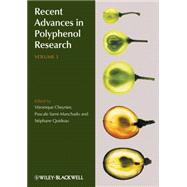
Stéphane Quideau is at the University of Bordeaux, Institut Européen de Chimie et Biologie, (ISM, CNRS-UMR 5255), France.
Preface xix
1 Plant Phenolics: A Biochemical and Physiological Perspective 1
Vincenzo Lattanzio, Angela Cardinali and Vito Linsalata
1.1 The general phenolic metabolism in plants 1
1.2 Effect of non-freezing low temperature stress on phenolic metabolism in crop plants 6
1.3 Plant phenolics as defence compounds 11
1.4 Diversion of carbon skeletons from primary to phenolic-related secondary metabolism 19References 26
2 Polyphenols: From Plant Adaptation to Useful Chemical Resources 41
Alain-Michel Boudet
2.1 The emergence of phenolic metabolism and the adaptation of plants to a terrestrial environment 41
2.2 The shikimate pathway: a complex and subtle interface between primary metabolism and phenolic metabolism 47
2.3 Plant (poly)phenols: a diversified reservoir of useful chemicals 562.4 Concluding remarks 63
Acknowledgments 64
References 64
3 Fifty Years of Polyphenol–Protein Complexes 71
Ann E. Hagerman
3.1 Introduction 71
3.2 Precipitable complexes 74
3.3 Soluble complexes 76
3.4 Proline-rich proteins 78
3.5 Mechanisms of binding 79
3.6 Stoichiometry of binding 80
3.7 Protein conformation 82
3.8 Covalent tannin–protein complexes 83
3.9 Conclusions 90
Acknowledgments 91
References 91
4 Chemistry of Flavonoids in Color Development 99
Kumi Yoshida, Kin-ichi Oyama and Tadao Kondo
4.1 Introduction 99
4.2 Synthetic studies on anthocyanins toward polyacylated pigments 103
4.3 Synthesis of copigments for studying blue color development 1094.4 Conclusion 122
Abbreviations 123
Acknowledgments 124
References 124
5 Colouring up Plant Biotechnology 131
Cathie Martin, Yang Zhang, Laurence Tomlinson, Kalyani Kallam, Jie Luo, Jonathan D.G. Jones, Antonio Granell, Diego Orzaez and Eugenio Butelli
5.1 Introduction 131
5.2 Plant production of anthocyanins 132
5.3 Engineering anthocyanin production in plants 1375.4 Conclusions 139
Acknowledgements 139
References 139
6 Anthocyanin Biosynthesis, Regulation, and Transport: New Insights from Model Species 143
Lucille Pourcel, Andrés Bohórquez-Restrepo, Niloufer G. Irani and Erich Grotewold
6.1 Anthocyanins and related pigments in model plant species 143
6.2 Transcriptional regulation of anthocyanin biosynthetic genes 1476.3 Anthocyanin transport and subvacuolar localization 151
6.4 Concluding remarks 154
References 154
7 Shedding Light on the Black Boxes of the Proanthocyanidin Pathway with Grapevine 161
Yung-Fen Huang, Véronique Cheynier and Nancy Terrier
7.1 Tools available on grape to study PA biosynthesis 161
7.2 Biosynthesis 1677.3 Regulation of the pathway 176
References 182
8 Phenolic Compounds in Plant Defense and Pathogen Counter-defense Mechanisms 191
Fouad Daayf, Abdelbasset El Hadrami, Ahmed F. El-Bebany, Maria A. Henriquez, Zhen Yao, Holly Derksen, Isma¨il El-Hadrami and Lorne R. Adam
8.1 Introduction 191
8.2 Plant defenses and pathogen counter-defenses 192
8.3 Phenolic-related plant responses to pathogens 194
8.4 Pathogens counter-defense against plants’ phenolic-related defenses 2008.5 Concluding remarks 202
Acknowledgments 203
References 203
9 Absorption and Metabolism of Dietary Chlorogenic Acids and Procyanidins 209
Gary Williamson and Angelique Stalmach
9.1 Introduction 209
9.2 Procyanidins 210
9.3 Chlorogenic acids and hydroxycinnamates 214References 218
10 Extra-Virgin Olive Oil—Healthful Properties of Its Phenolic Constituents 223
Francesco Visioli and Elena Bernardini
10.1 Introduction 223
10.2 Epidemiological studies 225
10.3 In vitro studies on olive oil’s phenolics 225
10.4 In vivo studies 228
10.5 Olive oil and cancer 231
10.6 Potential mechanisms of action of olive phenols—to be elucidated 232
10.7 Focus on hydroxytyrosol 233
10.8 Olive mill waste water as a source of olive phenols 236
10.9 Conclusions 240
Acknowledgments 244
References 244
11 Analysis and Characterisation of Flavonoid Phase II Metabolites 249
Celestino Santos-Buelga, Susana González-Manzano, Montserrat Dueñas and Ana M. González-Param´as
11.1 Introduction 249
11.2 Flavonoid metabolism 251
11.3 Preparation of metabolites 253
11.4 Characterisation of flavonoid metabolites 25811.5 Extraction and preparation 263
11.6 Analysis of metabolites in biological samples 268Acknowledgments 277
References 277
12 High-speed Countercurrent Chromatography in the Separation of Polyphenols 287
Andrew Marston
12.1 Foreword 287
12.2 High-speed countercurrent chromatography 288
12.3 Separations of polyphenols 291
12.4 Extensions of the basic countercurrent chromatography method 302References 307
13 Strategies for the Controlled Synthesis of Oligomeric Polyphenols 311
Scott A. Snyder
13.1 Introduction 311
13.2 Serial oligomer families 313
13.3 Oligomer families with diverse bond connections 31913.4 Conclusion 345
Acknowledgments 345
References 346
Index 353
A color plate section is located between pages 12 and 13. 2
The New copy of this book will include any supplemental materials advertised. Please check the title of the book to determine if it should include any access cards, study guides, lab manuals, CDs, etc.
The Used, Rental and eBook copies of this book are not guaranteed to include any supplemental materials. Typically, only the book itself is included. This is true even if the title states it includes any access cards, study guides, lab manuals, CDs, etc.